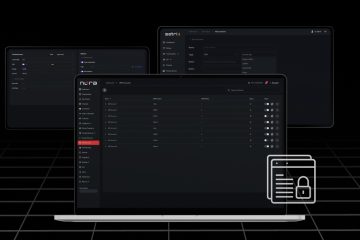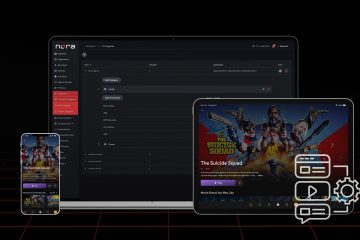Table of Contents
- How to Create Engagement for OTT Channels With Better UI/UX
- 1. What Has Changed About Watching TV
- 2. Content Discovery and Navigation
How to Create Engagement for OTT Channels With Better UI/UX
An over-the-top (OTT) video platform is a streaming video service provided through the Internet- some of the most popular of these are Netflix, Amazon Prime, Pluto TV, and Hulu. Models include subscription-based services (SVOD) and ad-supported models (AVOD). Hulu, in fact, charges you to watch ads.
With the advent of 5G, the OTT media market will grow exponentially, as data rates increase and more TV viewers cut the cord. Media companies, including independent rights holders and library owners, are launching their own OTT services and licensing less of their popular content to other platforms.

Content has always been King. But engagement is the Queen who rules
OTT platforms seek ways to keep users engaged. This is one of the great conundrums of OTT; how to get users to watch, keep watching, accept recommendations, and – most importantly – comment on or refer video content to other viewers.
To increase engagement and deliver a better viewing experience, there are several user interface (UI) and user experience (UX) considerations to keep in mind across the entire user journey — from user registration to content discovery (and content marketing) and, finally, to content personalization for users.
1. What Has Changed About Watching TV
“Watching TV” has changed a great deal over the past few decades. Viewing habits were, once upon a remote, all about the channel and the time to air or using the VCR to record shows. With the rise of OTT, the entire experience has changed. OTT platforms provide viewers a great deal of flexibility in how they view, archive, or share programs.
Whether an OTT service offers video on demand or live TV, you can set your favorite shows with a network DVR or, if enabled, use catch-up services to pause live TV, rewind or go back 2 weeks to watch your favorite shows. These experience features have replaced hardware – whether DVR or DVD player – into a single user experience.
All of these interactive features ride on top of numerous devices; native mobile apps, browsers, SmartTVs, set-top boxes, and other devices, including tablets and smartphones.
To watch TV channels, turning on the TV was all you needed to do before the OTT era. An onboarding experience is required for new users in order to watch OTT content. The business model of many OTT media apps is based on subscription data. An onboarding process should be easy and simple to entice users to continue paying for their membership.
At the same time, media companies want to avoid paying commissions to the likes of Apple, so their OTT apps are considered companion apps. As with Netflix, you register on the (Netflix) site to submit user information and credit card details. Then, you are free to login across multiple devices.
Multiple profiles and screens for a single account
Remember growing up, when we fought over a TV remote control, arguing about which show we wanted to watch next? The household competed for a limited resource: one TV screen. OTT apps literally ended these TV remote control battles in households.
OTT media apps such as Netflix and Disney+ enable different devices and user profiles on one account. This means each member can access their content via their individualized interfaces (SmartTV, laptops, tablets, smartphones). You might expect your OTT media apps to reflect your taste, not your sibling’s taste. By allowing multiple profiles and screens per account, OTT users can keep their watching patterns.
At the same time, best practices limit access so you cannot share your user name and password with 100 of your best friends. So, limiting devices and connections goes a long way to eliminating cheaters.

2. Content Discovery and Navigation
Content is only valuable if you can find it.
Netflix has a massive amount of OTT video content; finding the content you care about or binge on is key. Key to their business model and key to your enjoyment of the service.
OTT apps should provide a user interface (OTT UI) to maximize real estate and act in an intuitive manner, so users can find the content that they want.
A Home Page to Promote Content and Continue Watching
Clear navigation helps users find TV shows or films. It’s commonly displayed as a navigation bar or a hamburger.
Content Promotion and Search
It is critical to make new content visible. Whether you are promoting a new product or series or movie, the home page is the pace from which to display new offerings.
Best of breed OTT apps have a carousel (or several) to promote new shows, editorially selected content, or a list of shows to continue watching. Back-end middleware allows you to organize your OTT content, create banners to promote shows and generate an auto-scroll carousel that improves visibility and click-thru capabilities.
Additionally, users should be able to navigate content regardless of where they are in the world. So it’s a good design concept to put a search bar in the same place on every page. Instantly showing results as users type can also enhance user engagement.
Searching by genres, actors or titles allows users to find content easily.
Video previews/trailers are a great way to drive engagement in OTT. Trailers help users decide whether to click “play” or not. Netflix has executed a great preview experience. Hovering on a thumbnail autostarts a video preview.
Personalization and Recommendations
OTT apps are personal to the user and content recommendations should be based on an individual’s viewing history. Artificial intelligence and a strong movie database improve content recommendations and help keep the user watching.
When content dries up, users cancel subscriptions.
Amazon Prime is a great case study in the classic consumer model of “try before you buy”: You select a channel, pay nothing for 7 days, and then the subscription fee kicks in after the trial.
Like the gym membership, it is easy to let the charges roll. And roll. And the better designed your OTT service, the more likely that your subscribers will let the good (content) roll.



1 Comment
Paul · October 18, 2022 at 1:21 pm
Agree with everything said in the article. Ui/Ux is important in every business